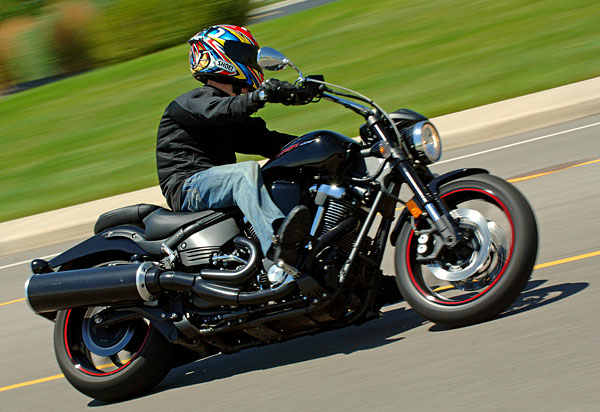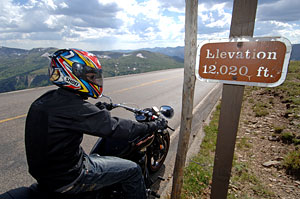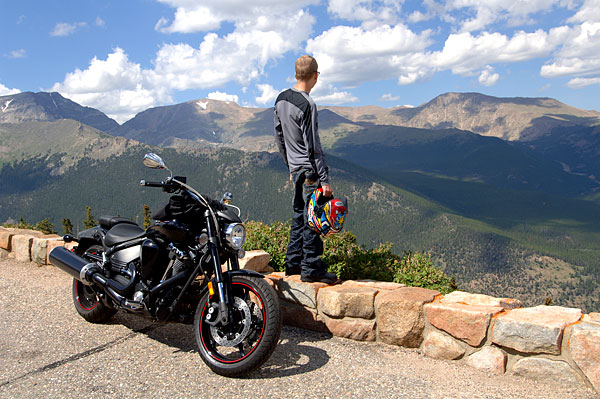
When Yamaha decided to enter the power cruiser market way back in 2002, they started with the air-cooled V-Twin from their standard Road Star line, adding a bigger bore and redesigning the intake and exhaust tracts for more power. Then they wrapped it in a package inspired by their sportbikes – including a lightweight aluminum frame, sporty inverted forks and monoshock, powerful brakes, and lightweight wheels. In the end, they had a package that was one of the most fun-to-ride cruisers we’d ever tested (see our 2002 first ride report here and here), and was an extremely competitive entry into the then-new ‘power cruiser’ class.

Fast forward to 2006; in the world of sportbikes, a 2002 model is way behind the SOTA, but the longer product cycles of the cruiser market mean that the Road Star Warrior still remains in your local Yamaha dealership, the only difference being that the bike is now referred to as a Star rather than a Yamaha (as are all Yamaha’s cruisers).
Has the Warrior aged gracefully? We recently spent some time on a 2006 Warrior while attending the annual STARdays event in Colorado, and riding the Warrior through the Rocky Mountains reminded me exactly why this has long been, and still is, one of my favorite cruisers.
The Warrior’s aggressive styling still turns heads, especially with it’s massive right-hand muffler, and the rumbling exhaust note of the high-performance 1670cc V-Twin still sounds like music to the rider’s ears. Despite it’s modern design, the air-cooled V-Twin still has a fairly traditional look, and it definitely puts out the signature low-frequency thumping beloved by cruiser riders for decades.
But just as the thump of the V-Twin starts to make you think you’re aboard a traditional cruiser, the way the Warrior snaps over into the first corner you encounter will remind you otherwise. The combination of a lightweight (for a cruiser, at least!), rigid chassis with high-grade suspension and powerful brakes makes the Warrior a more entertaining companion in the twisties than just about any other cruiser I can think of. Unlike many traditional cruisers, which drag their floorboards in fear at the first hint of a corner, the Warrior is capable of plenty of lean angle – 40 degrees, according to Yamaha. The amount of available lean, combined with the sticky tires and confidence-inspiring chassis/suspension, means that the Warrior can be hustled through the canyons and mountain switchbacks at a pace likely to satisfy all but the most dedicated of knee-dragging sportbike nuts.

While the Warrior provides handling and acceleration levels that are impressive for a cruiser, don’t think that it isn’t comfortable. The seat is plush and supports the base of your hips, providing plenty of comfort for all-day rides – as I found out in Colorado. Of course, like most unfaired cruisers, the lack of wind protection becomes uncomfortable at freeway speeds, but below 70mph the Warrior is great for a day of spirited riding.
In these days of 2000cc+ V-Twins and Triples putting out nearly twice as much power as some of 2002’s biggest cruisers, the Warrior is by no means the fastest cruiser on the market. Nor is it the best-handling bike you can buy, although it’s certainly one of, if not the best-handling cruisers. No, what makes the Warrior such a great bike is a satisfying combination of power, handling, comfort, and style.
By the way, I was photographed aboard the Midnight version of the Star Warrior, which features black paint, frame, airbox cover, engine covers and exhaust, as well as black wheels with red stripes. It is functionally equivalent to other Warriors. For prices and specifications, visit the Star web site here





